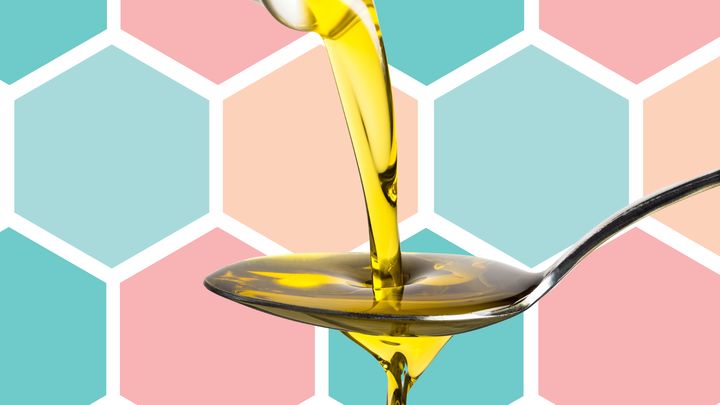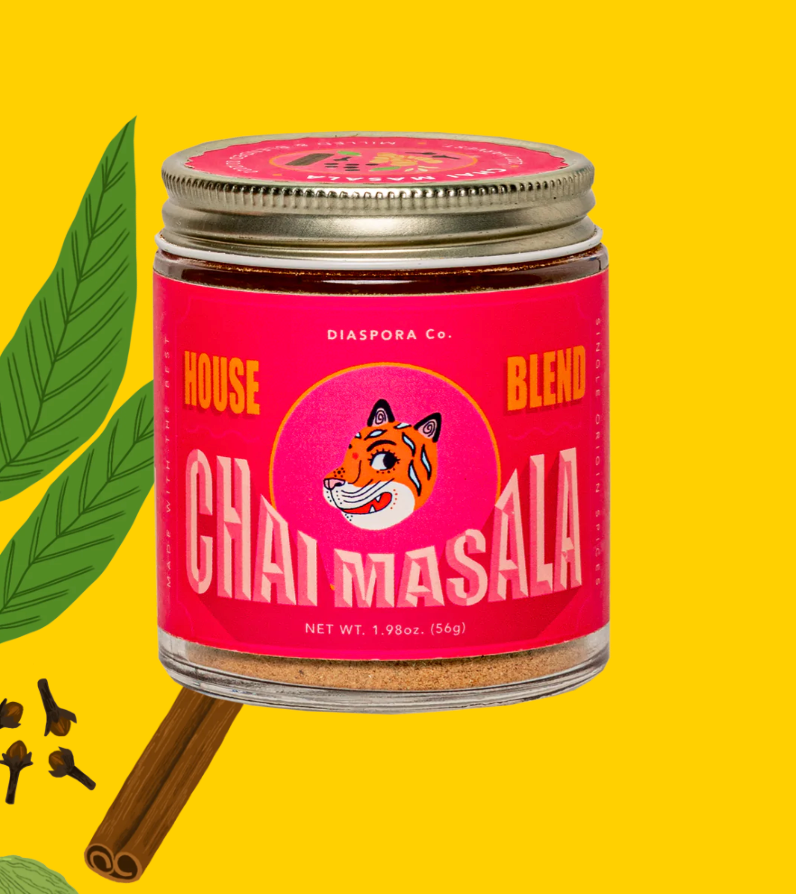
If you’ve spent any time on food TikTok or Instagram, you’ve likely noticed an onslaught of fancy olive oil brands, all featuring colorful, beautifully designed, photo-friendly bottles. Influencers and social media-savvy chefs drizzle the golden liquid from these pretty containers on salads, meats, fish, hummus and much more, and their posts and videos make “status” olive oil seem like a necessary addition to any home cook’s arsenal.
But a bit of online searching will quickly show that on-trend olive oils (like Brightland, Graza, Fat Gold and other popular brands) command a higher retail price than the extra-virgin olive oil bottles sold at grocery stores (and a much higher price than the big under-the-sink olive oil vats sold at wholesale clubs like Costco).
The very Instagram-friendly olive oils out there tend to sell for $15-40, with Brightland going for $37 per 12.7-fluid ounce bottle, Graza costing $15-20 for 25.35 fluid ounces and Fat Gold retailing at $30 for 16.9 fluid ounces. (By contrast, a 2-liter jug of Kirkland olive oil costs $20.)
So are these “fancy” olive oils worth the extra cash? When we asked professional chefs and olive oil experts to answer this question, they generally agreed that these oils are sometimes worth their splashy social media presence and their elevated cost. That said, Christina McKeough, chef de cuisine of High Street in Philadelphia, pointed out that the “is it worth it?” question really comes down to personal preferences.
“Like any luxury product, it’s only worth it if you really want it, right?” McKeough asked. Shoppers need to remember that not all trendy oils are created equal and that a few important characteristics can help to determine whether hip olive oil brands qualify as smart purchases.
It’s up to shoppers to do a little research.
When it comes to olive oils with a big social media presence, their (usually higher) price points can reflect a number of factors. According to Doug Psaltis, chef and co-owner of Andros Taverna in Chicago, shoppers should do a bit of digging to figure out exactly what they’re paying for. “Are we buying the great packaging and marketing with inflated prices? I am not sure that price always correlates to quality. What would lead me to pay more for olive oil would be freshness ― a great raw product that is produced by great people with integrity,” Psaltis said.
In some cases, olive oil’s “viral” potential has more to do with its bottle’s aesthetic (and its ability to be marketed by influencers) than with its overall quality. Lisa McManus, editor of America’s Test Kitchen Reviews, believes social media can encourage people to learn more about olive oil, which is a positive development: “If Instagram has gotten people interested in olive oil, that’s incredibly great.” However, she advised against taking these Instagram or TikTok recommendations at face value, instead encouraging the olive-oil-curious among us to “take this opportunity to explore beyond the flashy promotional stuff.”
“Great olive oil does not necessarily come via the recommendations of Instagram stars. There are fantastic extra-virgin olive oil producers throughout California and the world who don’t have Instagram accounts,” she said, adding that “cute bottles and attractive promoters don’t translate automatically to great oil.”
‘Fancy olive oil can actually save you money.’
Alexa Dombkoski, founder of Bellemille Extra Virgin Olive Oil, admits that “olive oil isn’t a very sexy product to sell, so putting it in Instagram-able packaging certainly helps.” But she went on to explain that “with all the options on the market, you have to be able to distinguish between the pretty faces and the products that can stand on their own based on quality.”
Once you know what to look for and how to interpret the labels of the trendy viral olive oils out there (or the labels of your regular supermarket brands), then you’ll discover that, as Dombkoski said, “Fancy olive oil can actually save you money. It’s always best to use the highest quality ingredients across the board, but when that isn’t possible, you can lean on that fancy olive oil to add a little zip [to] ‘save’ the most basic or boring dish and bring it back to life.”
Essentially, Dombkoski believes that using a $30 olive oil made from olives harvested at their peak and cold-pressed for maximum flavor can balance out any negatives that come from purchasing a cheaper cut of meat or off-season produce. Also, because a little bit of olive oil goes a long way, spending more on a bottle gives you a high-quality product that can be used for countless recipes over the course of several months.
As the CEO and co-founder of Graza, one of the most ubiquitous “fancy” olive oil brands on social media these days, Andrew Benin acknowledges that “sometimes, when you are paying 38 bucks for 375 milliliters of olive oil, $9 of that is just to cover the cost of the fancy bottle.” But in his view, olive oil that earns its higher price (and he counts the olive oil produced by Graza in this category) is “harvested and milled the right way, protected from light, never blended, [and] is a powerful flavor bomb.”
How to know if your pricey olive oil is worth the cash.
Chef Steven Jarczyk of Sfera Sicilian Street Food in Chicago recommends paying attention to what the label says about where and how it’s grown. “You have to start with beautiful olives,” he said. Psaltis also prioritizes freshness: “[You should look for] a great raw product that is produced by great people with integrity. Are they choosing the best fruit to mill? Is the olive oil fresh and handled with care? I believe those are the most important factors that separate a good product from a great product.”
Dombkoski gave a clear breakdown of what to look for on a label: “Does it tell you where the oil comes from? Is that different than where the label says it was bottled? Is it blended with olive oil from somewhere else? A quality producer is going to want you to know where the olive oil is from, when it was produced, [and] how it was produced. The more information a brand is willing to volunteer about their production, the better off the consumer is to make an educated decision when purchasing olive oil.”
If you’re wondering what specific information you want to see, look out for the following before buying a new brand of olive oil:
- “Extra virgin”: This term, commonly found on olive oil bottles, refers to oil that’s never been heated or treated with chemicals. Because the oil is cold pressed and unrefined, it retains more of the natural flavor of the olives and offers both aromatic notes and a smooth texture.
- The phrases “single origin” and “single varietal”: “Single origin” means the olives used to make the oil are grown in the same location, while “single varietal” means only one type of olive is used. While blended olive oils aren’t inherently bad, there’s a lot more room for error in these bottles; different growing conditions and different olive types can clash and produce an oil with a less-than-smooth flavor profile. If your oil only includes one type of olive grown in the same place, then you’ll end up with a much higher rate of consistency.
- Grown in Spain, Italy, Greece or California: Olives thrive in Mediterranean climates, so olive oils produced in actual Mediterranean countries benefit from the vibrant flavor of the olives grown there. In the U.S., Southern California’s Mediterranean-ish temperatures make this region the best area for domestic olive oil.
Make sure you’re using it for the right reasons.
Some home cooks say olive oil (and especially “nicer” olive oils) shouldn’t be used for cooking, because the oil’s bright and mellow flavors can turn bitter and acrid. But our experts insist that, in the words of Dombkoski, “It is perfectly acceptable to cook with your fancy extra-virgin olive oil.” That said, Dombkoski warned that quality extra-virgin olive oil “will impart a distinct flavor into your dishes.” So if you don’t want to taste the grassy, botanical notes associated with olive oil, you may want to swap it out for a neutral-flavored cooking oil like vegetable oil or canola oil.
To maximize the flavor potential of well-made olive oil, Ann Ziata, chef at the Institute of Culinary Education, suggests “using it as a finishing oil or a dressing oil rather than a cooking oil.”
“High-end olive oil will add great depth and richness when used as a seasoning, drizzled over pasta, vegetables or rice,” she added. “High-heat cooking like deep-frying or grilling may destroy the flavors of the oil, which are sensitive to heat, oxygen, and light.”
Mica Talmor, the chef and owner of Pomella in Oakland, California, likes to use olive oil for finishing, but she mentioned that “EVOO has very bold and distinct flavors, so I won’t use it if I want the dressing to have a specific flavor, like in a citrus vinaigrette or pomegranate vinaigrette. A less expensive neutral oil is much better for that.”
While lighter-weight neutral oils are a better bet for deep-frying and high-heat cooking, plenty of recipes still call for olive oil as a primary cooking fat, particularly when moderate or low stove or oven temperatures are involved. In these cases, “‘regular’ olive oils are still perfectly fine to use when cooking, and they have the added advantage of being extremely versatile and less expensive,” said Michael Murdy, the chef and food scientist behind the blog Robust Kitchen.
Check out the bottle itself (not just the label) before you buy.
To get the best possible value out of a $30-plus bottle of olive oil, be sure to store the oil in conditions that will keep it fresh and flavorful for an extended period. “The enemies of olive oil are heat, air, light and time,” McManus said. “You want to keep it cool, covered, and tightly capped, away from heat and sunlight (so definitely do not store it next to your stove or in a window!).”
Michelle Spangler, the owner of Infused Oils & Vinegars in Dallas, said it’s also wise to “purchase oil that is packaged in dark glass or light-impermeable tins from a reputable dealer who has stored it in a temperature-controlled environment.” A darker container will prevent the oil from being affected by light.
Olive oil doesn’t “go bad” like other perishable groceries, but our experts generally agreed a bottle of “nice” olive oil will be at its best within six to nine months of opening. For optimal results, switch out your olive oil bottles at least that frequently.
